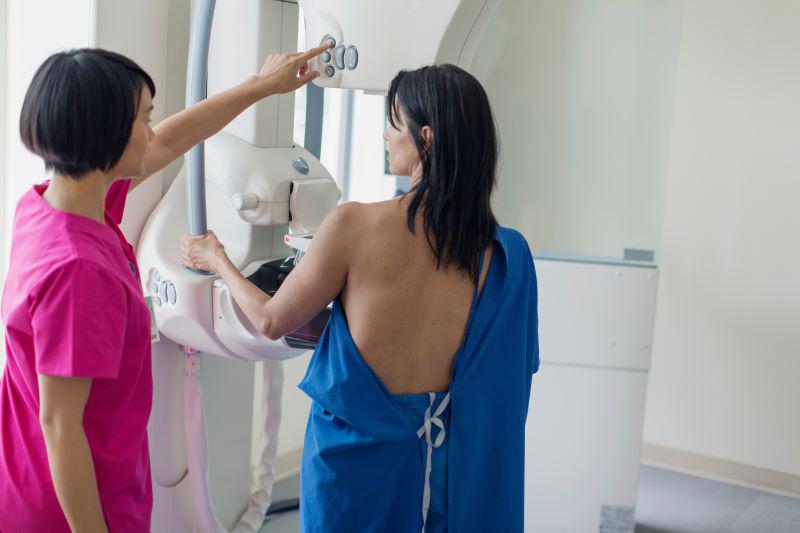Get Healthy!

- Amy Norton
- Posted December 19, 2022
Many U.S. Women Must Travel Far to Get Mammograms
Many American women have to travel long distances to reach the nearest mammography center, a new study finds -- raising questions about whether that keeps some from receiving breast cancer screening.
Researchers found that 8.2 million women had limited access to mammography screening in 2022 -- defined as living more than a 20-minute drive to the nearest facility. That was up from 7.5 million in 2006.
Not surprisingly, women in rural areas were most affected: In rural regions of 28 states, more than half of women had limited mammography access due to where they lived.
While 20 minutes might not sound like a long drive, that was the minimum. In some places, it was closer to 45 minutes to an hour, according to researcher Daniel Wiese, a senior scientist with the American Cancer Society.
"This might not be the most important barrier to mammography screening," Wiese said. But, he added, it could be substantial for some women -- especially if they have other obstacles, like no paid time off from work or needing to find child care.
What's not clear from the study, though, is whether long drive times actually affected screening rates in those rural areas.
Wiese's team found that in many sparsely populated states, relatively fewer women were up-to-date on breast cancer screening, versus more densely populated states. But it's not known whether that's because women in rural areas had longer travel times to get screened.
Other experts said it's easy to see how long travel times could keep some women from getting screened. It's not a one-time event, but repeated every one to two years. And if there's a suspicious finding, that means a return trip.
"This is something that's been on our radar for a long time," said Molly Guthrie, vice president of policy and advocacy for the breast cancer nonprofit Susan G. Komen.
She said it was good to see research highlighting a health care disparity that can be overlooked: Americans in rural parts of the country often live far away from a range of health care services.
"And mammography is no exception," Guthrie said.
The findings, published Dec. 14 in the Journal of the National Cancer Institute, are based on data from the U.S. Food and Drug Administration. The researchers looked at mammography facility locations within census tracts nationwide for the years 2006 to 2022, estimating the number of women ages 45 to 84 who would have limited access to mammography based on where they lived.
Over those years, the study found, between 12% and 13% of U.S. women fell into that group. But there were stark differences between rural and urban areas.
Across all rural census tracts, just over half of women had more than a 20-minute drive to a mammography center in 2022. That compared with only 3% of women living in urban tracts.
The findings raise important questions, said Dr. Laurie Zephyrin, senior vice president of advancing health equity at the nonprofit Commonwealth Fund in New York City.
"How does this affect screening rates, or follow-up care? How does this affect breast cancer mortality?" Zephyrin said.
A simple-sounding solution would be to open more mammography facilities in rural America. But there is little financial incentive to do that in sparsely populated areas, and it would go against the current tide of consolidating health care services into larger, regional medical centers.
Wiese's team found that in 34 states, the proportion of women in rural areas with limited access to mammography rose over time.
"We believe the consolidation of facilities into larger centers could be one explanation," Wiese said.
However, having a mammography facility nearby is not the only consideration, both Guthrie and Zephyrin said: Women should have access to high-quality care, too -- including digital 3-D mammography and experienced radiologists interpreting the images.
A longer drive to a larger medical center, Zephyrin noted, might provide that.
There are other potential ways to help women in rural areas. Guthrie pointed to a New York State law that, among other things, required over 200 hospitals and extension clinics to offer mammography services in the evening, early morning or weekend, to help women who cannot get there during the workday.
Mobile screening units are another possible way to help, all three experts said. But again, Zephyrin pointed out, ensuring women receive good overall care -- including getting any follow-up that's necessary after a screening -- is critical.
Guthrie said that women who need help finding local resources, including free or low-cost mammograms, can call Komen's Breast Care Helpline at 1-877 GO KOMEN.
More information
Susan G. Komen has more on mammography screening.
SOURCES: Daniel Wiese, PhD, senior scientist, Cancer Disparity Research, American Cancer Society, Kennesaw, Ga.; Molly Guthrie, vice president, policy and advocacy, Susan G. Komen, Dallas; Laurie Zephyrin, MD, MPH, MBA, senior vice president, advancing health equity, Commonwealth Fund, New York City; Journal of the National Cancer Institute, Dec. 14, 2022



